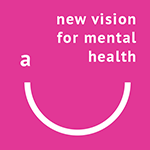This manual – written by Jessica Taylor and Jaimi Shrive – is now available for purchase. The publishers say:
“A non-diagnostic, trauma-informed guide to emotion, thought, and behaviour.
This must-have manual presents the first trauma-informed, non-diagnostic alternative to other manuals of mental health issues and psychiatric disorders. Rather than lists of disorders and medicalised symptoms, this extensive manual provides information about hundreds of trauma responses, emotions, thoughts, behaviours and experiences that have previously been categorised as illnesses and disorders.
Detail:
This world-first trauma-informed manual equips progressive professionals with evidence-based, anti-oppressive, anti-blaming and non-diagnostic information about a wide range of human emotion, thought, and behaviour. Building on the quickly growing consensus that trauma-informed, anti-oppressive practice is vital to the way we understand society, ourselves, and our clients; this book provides the first comprehensive alternative to diagnostic manuals.
The Indicative Trauma Impact Manual (ITIM) is suitable for:
- Medical professionals
- Social workers
- Therapists and counsellors
- Support workers
- Emergency services professionals
- Academics and students
- Teachers and education professionals
- Caseworkers
- Legal professionals
- Psychologists and Psychiatrists
- Health care professionals
- Any other professionals working with people in distress, trauma or crisis
The manual describes, explains, and explores everything from nightmares to self-harming in an A-Z of emotions, thoughts and behaviours that are common in traumatised and distressed people. This edition also includes diagrams, theories and peer reviewed evidence throughout.
The ITIM has been peer reviewed and tested by a range of senior professionals, academics, clinicians, and people with lived experience of trauma and distress.
Content
1. Introduction to ITIM
2. Basic human emotions
3. Distressing experiences and traumas (A-Z)
4. Trauma responses and coping mechanisms (A-Z)
5. Signs of trauma in infants and toddlers
6. Physical responses to trauma and distress (A-Z)
7. Useful tools and resources
8. Side effects, withdrawal and complaints about medication
9. Understanding bias and oppression in psychiatry
10. Understanding approaches to supporting traumatised and distressed people
You can find out more from here.





Pingback: Valid Challenges to the DSM - IMHU